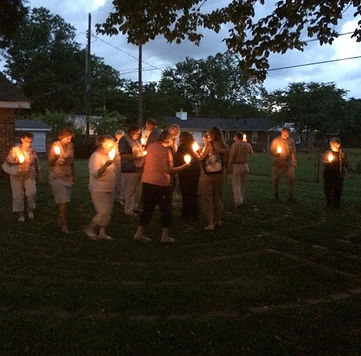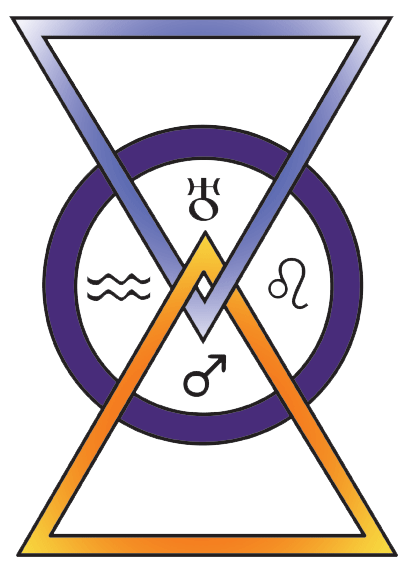Center of Light
for Applied Metaphysics
4208 Holmes Avenue NW, Huntsville, Alabama 35816
Phone: 256-895-0255
Weekly Service on Sundays at 11 am
The labyrinth is an ancient spiritual tool. The winding circuitous walk symbolizes a pilgrim's walk with God. It is an archetype, a divine imprint, found in all religious traditions, in various forms around the world and throughout history. The labyrinth is not a maze; there are no tricks to it and no dead ends. The path winds throughout and becomes a mirror of the way we live our lives; it touches our sorrows and releases our joys. So walk it with an open heart and mind.
The labyrinth at the Center of Light for Applied Metaphysics is an ancient seven circuit classical labyrinth. It is outlined in bricks and homemade pavers and is about 30 feet across. The walk is about a 1/3 mile. The latitude is 34° 43’ 41.06” N and the longitude is 86° 37’ 58.67” W.

History
Labyrinths have been known to the human race for over 4000 years. They have been seen and are seen in Greece, Crete, Egypt, India, northern Europe, many parts of South America and the Southwestern US. The earliest Christian labyrinth was found in the 4th century basilica of Reparatus Orleansville in lgeria. The more elaborate ones began to show up in the cathedrals of the middle-ages and were used as pilgrimage centers. Since the dangers and cost of going to Jerusalem was so high, the faithful would come to the cathedrals and walk the labyrinths. The most well known one today is in Chartres Cathedral in France but there are about 12 more throughout Europe. Most of these are the eleven path labyrinth.
In the Middle-Ages, Christians were expected to travel to the Holy Land at least once during their lives. As travel became more dangerous during the Crusades, certain cathedrals throughout Europe were designated as "pilgrimage cathedrals." Christians would travel to those sites where they would walk a labyrinth laid in the cathedral's stone floor. This is why these labyrinths were sometimes called the "New Jerusalem."
These early pilgrims walked the labyrinth as we do today; as a metaphor of our life's journey. Today labyrinths are being used in churches, in hospitals, in retirement centers, in parks, in prisons, and in retreat and conference centers. The labyrinth appeals to all ages from young adults to senior citizens.
Walking the Labyrinth
The labyrinth walk is different each time one walks it. Often people find peace, solace, release, and a deep sense of joy. When walked with a community of people, the walk is a shared journey, an activity which groups do together to coalesce and unify visions. The labyrinth has a single path into and out of the center. Start your walk by removing your shoes. Then clear your mind and become aware of your breath. You may want to say a prayer before you move to the entrance. As you start to walk, find your own pace. There is no need to rush. Some people will walk faster, others more slowly. An average walk takes 20 to 30 minutes.
Because the labyrinth is a two-way street, you may "pass" people, or let others step around you, whichever is easiest. Those going in will meet those coming out. Do what feels natural.

Sometimes it is helpful to think about your walk as employing the traditional three-fold spiritual path: Purgation, Illumination, Union. Purgation is the walk in to the center, letting go of the details of your life, shedding thoughts and emotions. It empties and quiets the mind. Illumination is when you reach the center. Stay there as long as you like. It is a place of meditation and prayer. Receive what is there for you to receive. Union is joining God, your Higher Power. Each time you walk the labyrinth you become more empowered to find and to do the work you feel your soul is reaching for, the work God is calling you to do in the world.
There is no right way or wrong way to walk the labyrinth. Simply relax and enjoy your journey.

